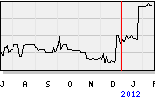
March 16, 2009 – Trumbull, CT – Océ, an international leader in digital document management and delivery, announced that in independent testing, the Océ CS650 color system has proven to be a viable alternative to offset printing for direct mail without protective coatings. Printing Industries of America in conjunction with its Digital Printing Council compared the output of various digital presses to measure the durability of uncoated printed postcards under actual mailing and handling conditions. The Océ CS650 system was one of the top digital performers in all test criteria, including front side mailing and address side mailing. The system was also the top performer in the Sutherland Ink Rub test. The testing and results are presented in "Digital Printing and Survivability in the U.S. Postal System: A Printing Industries of America Digital Printing Council Research Study."
Direct marketers are turning to digital technology for affordable, personalized color mailings. The Printing Industries of America Digital Printing Council study was designed to show how well a digitally produced postcard could survive in the United States Postal System (USPS). The study compared the output of the Canon® ImagePRESS® C7000VP, HP Indigo press® 5500, Kodak® Nexpress® S3000, Océ CS650 Pro and Xerox® iGen3® digital presses, along with a Komori® NL28 sheetfed offset press.
Océ Outperforms Other Devices in Sutherland Test
In the Sutherland Ink Rub test, the Océ CS650 system outperformed all test devices. Sutherland ink-rub tests evaluate the smearing, scuffing, and rubbing resistance of ink on paper. In the test, a special simulation machine was run in 25 cycle intervals. As the front sides of postcards rubbed against each other, any tendency for the toner or ink on the print to scuff would be revealed.
The Océ CS650 output required twice the number of rub cycles than offset before showing scratches. This result demonstrates the durability of Océ output under real world conditions. Specifically, Océ CS650 output required 200 cycles before marking, while the closest competitor was affected at 150 Sutherland cycles. Offset output showed marking after 100 cycles.
"Océ is proud of these results because they demonstrate the viability of digital printing as an alternative to offset, especially for direct marketing applications like personalized postcards," said Eric De Goeijen, Vice President of Marketing, Océ North America. "We are also pleased for our many customers who have chosen Océ CS systems for their businesses and color printing. This test validates their decision to invest in digital solutions for direct mail and many other applications."
The Printing Industries Digital Print Council research study methodology designed a postcard that was printed on various digital presses with no coating using 10pt C1S paper. Then postcards were mailed from four different points to Printing Industries headquarters. Additionally, a postcard was produced via offset lithography for control and comparison. The results confirmed the value of digital color printing as an alternative to offset for these applications. The study revealed that overall, even with no coating applied, digitally produced postcards withstood the abuse of USPS processing as well as or better than postcards produced using offset lithography.
Océ CS650 Stands Out Among Digital Presses
The postcard was designed with heavy coverage to show any marking that might occur in the mail stream. Few professional designers would create a piece with so much coverage, but this design was chosen for the study to highlight any impact that could occur in the mail stream. Evaluating the front side of the postcards involved a sliding scale from one to four using the actual postcards. A score of "one" meant no penetration of toner on the postcard, while a "two" pointed to a slight penetration of toner in a small area. A "three" indicated a moderate penetration of toner in one or two locations, and a "four" meant major penetration of toner in a single area or penetration in three or more areas. A ranking of "five" indicated that the postcard was torn.
